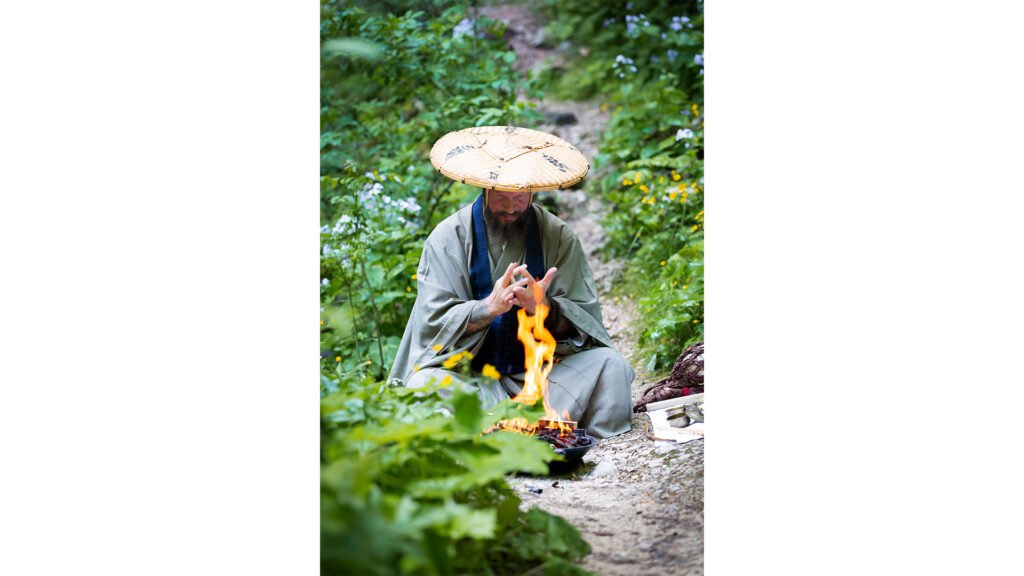In today’s era of individuality and aesthetic appreciation, bracelets have become a common sight on many wrists. On the streets and in alleys, bracelets of various materials and styles are everywhere, some fashionable, some simple, some luxurious. However, as we play with the beads on our wrists, have we ever wondered that these small objects might carry hundreds of years of cultural accumulation and the fragrance of time? Not all bracelets are created equal in terms of cultural significance and historical value. True heritage pieces are those that can strike a chord with history, carry cultural memories, and connect to the spiritual world. These “treasures on the hand” have evolved from solemn temple prayer beads to elegant accessories for scholars and literati, becoming a unique cultural code for interpreting Chinese culture.
I. The Sound of the Temple: The Practice and Reverence of Prayer Beads
The earliest form of bracelets is closely related to religious practice, with Buddhist prayer beads being the most representative. In ancient temples, with morning bells and evening drums, monks held prayer beads in their hands and chanted Buddha’s name, (bo dong) each bead one by one. This was not only a recitation of Buddhist teachings but also a contemplation of the mind. Prayer beads, known in Sanskrit as “Potsemo,” meaning “recitation counting,” were created to help practitioners gather their minds and focus on one point amid distracting thoughts.
Story One: The Epiphany Under the Bodhi Tree
Legend has it that after the Buddha attained enlightenment under the Bodhi tree, his disciples, to commemorate this moment and facilitate their practice, began using tree fruits strung together for counting. The most common Bodhi seeds symbolize “enlightenment” and “wisdom.” The Ming Dynasty “Compendium of Materia Medica” also records: “Bodhi seeds come from the Western Regions. In Sanskrit texts, they are called the Palosha tree. Its seeds can be made into prayer beads, which have merit.” A small Bodhi seed, after being rubbed by thousands of hands and baptized by time, forms a warm patina on its surface. This is not just a trace of time but also like the polishing and precipitation of a practitioner’s mind. There was once an old monk who, for decades, held a string of Star and Moon Bodhibeads, chanting sutras every day without interruption. Each bead on that string was full and round, densely covered with star-like dots, as if containing endless Zen thoughts. To him, this string of prayer beads had long ceased to be a simple counting tool; it had become his most faithful companion on the path of practice and a bridge to inner peace.
This (qiancheng) and focus originating from religion endowed early bracelets with profound spiritual connotations. It reminds people that in the hustle and bustle of the world, they should not forget to seek inwardly.

II. The Elegance of Scholars: The Spirit and Sentiment of Jade Ornaments
As time passed, bracelets gradually moved out of the temple and into the cultural lives of scholars and literati, evolving into a form of “elegant adornment.” Scholars used jade, wood, incense, and nuts as materials, carving and polishing them to (fu yu) new cultural meanings. These were no longer merely tools for practice but had become symbols of status, expressions of aesthetics, and( ji tuo) for sentiments.
Story Two: Su Shi’s Love for “Grasping Jade”
Su Shi, a great literary figure of the Song Dynasty, was not only renowned for his poetry, calligraphy, and painting but also had a refined taste for jade ornaments. He once had a beloved jade cong that he often held in his hand and rubbed. During his difficult years in exile in Huangzhou, this jade cong accompanied him through countless sleepless nights. The warmth and (nei lian) of the jade were just like his character of ( jian shou) in the face of adversity. “Better to eat without meat than to live without bamboo,” Su Shi’s pursuit of the spiritual world is evident. Bracelets are the externalization of this pursuit. Whether it is the (qing ya) agarwood, the (gu pu) red sandalwood, or the intricately carved walnut boat, they all carry the scholar’s spirit of “holding jade in the bosom” and the ideal of “comparing virtue to jade.” When they were not drinking tea, reading, or playing the qin, they would gently (nian) their bracelets, which was not only an elegant pastime but also a way to converse with ancient sages and communicate with their own hearts.
Scholars’ bracelets emphasized artistic conception and style. A carved olive pit might condense a landscape painting; a string of agarwood beads could emit a faint fragrance with every movement, refreshing the mind and cleansing the soul. It was an extension of the scholarly studio’s refined objects and an expression of the aesthetics of life.

III. The Cultural Code on the Wrist: More Than Just Decoration
From temple prayer beads to scholars’ elegant ornaments, the form and function of bracelets have changed, but their core of carrying culture and transmitting emotions has never changed. It is like a unique set of “cultural codes” that, when worn on the wrist, opens a dialogue with history, culture, and the self.
- The Symbolism of Materials: Whether it is Bodhi symbolizing wisdom and enlightenment, jade representing the virtues of a gentleman, or various gemstones and woods (yu yi) auspiciousness, each material has its own unique cultural symbolism.
- The Warmth of Craftsmanship: From simple (da mo) to complex (diao ke),every bracelet with heritage embodies the craftsmanship and wisdom of artisans. The warmth of handmade work gives (bing ling) materials the temperature of emotion.
- Emotional Sustenance: It may be a keepsake passed down from ancestors, carrying family memories; a gift from a close friend, witnessing deep friendship; or a personal souvenir from a special moment, (chen zai) an unforgettable story.
IV. Planting Grass Moment: Choosing Your Own “Heritage”
After understanding the cultural origins behind bracelets, when we look at the objects on our wrists again, we may feel more reverence and thought. Not all brightly colored beads strung together can be called “heritage.” A truly heritage bracelet is one that, when you touch it, makes you feel the weight of history; when you wear it, you experience the charm of culture; and when you appreciate it, you find inner resonance.
It may not be expensive, but it must have a story; it may not be dazzling, but it must have warmth. Choosing a bracelet that suits you is not just choosing an ornament but also a lifestyle and a cultural identity. It can be a quiet corner in your busy life and a small sustenance in your spiritual world.

Conclusion:
“Not all bracelets are called heritage,” this sentence reminds us that in the fast-paced consumer era, we should not be easily (mi huo) by superficial glitz. Those bracelets that originated from temple prayer beads and were infused with the elegance of scholars are the materialized embodiment of cultural genes flowing in our blood. They are alive, storied, and warm.
When we choose and wear such a bracelet, we are not merely decorating ourselves but also inheriting a culture, continuing a sentiment, and guarding a piece of inner peace and perseverance. May we all find that bracelet of our own “heritage,” let it play the cultural (qing yin) that spans thousands of years on our wrists, and become our unique cultural mark as we walk through the world.
